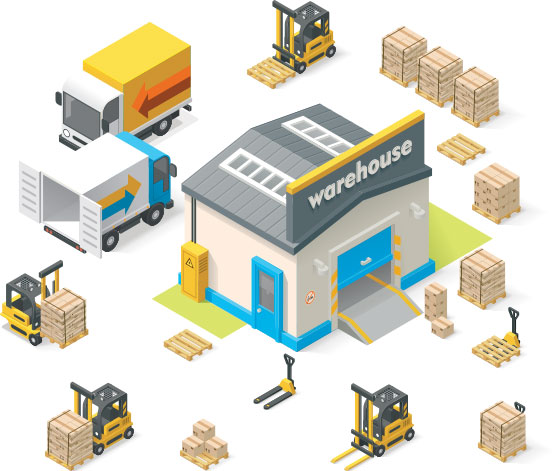
Supply chain logistics in India is a complex and dynamic system that involves the movement of goods and services from their origin to their final destination. Within this system, warehouses play a critical role in ensuring the smooth and efficient flow of goods across the supply chain.
Over the years, the warehouse industry in India has undergone a significant transformation, driven by changing market dynamics, supply chain requirements, and technological advancements. One such example is the emergence of a modern warehouse in Sonipat, which has revolutionized supply chain logistics in the region.
In this blog, we will explore the different ways in which India’s warehouses are transforming supply chain logistics.
Emerging Trends in India’s Warehouses
The transformation of India’s warehouses is being driven by a number of emerging trends that are shaping the supply chain logistics landscape in the country. Dive deeper to explore some of these key trends in detail:
Technological Advancements
With the advent of automation and robotics in warehouses, the process of inventory management and order fulfilment have become faster and more efficient. AI-powered inventory management systems are enabling warehouses to optimize inventory levels and reduce wastage, while cloud computing and IoT integration are improving warehouse management and tracking. These trends are evident in warehouses in Sankrail, where businesses are embracing new technologies to stay competitive.
Infrastructural Developments
The development of multi-modal transportation systems, cold chain infrastructure, logistics parks and SEZs is enabling businesses to optimize their supply chain logistics networks and reduce transportation costs. This is evident in the construction of modern warehouses in Ludhiana, which are being designed to accommodate these new infrastructure developments.
Demand-Side Factors
The rise of e-commerce and growing customer expectations are driving businesses to invest in more efficient and effective warehouse solutions. In addition, the evolving regulatory environment is making it increasingly important for businesses to adopt sustainable warehouse practices. These trends are shaping the warehouse in Ludhiana as businesses strive to meet the demands of their customers and regulators.
Challenges and Opportunities
The transformation of a warehouse in Sankrail presents both challenges and opportunities for businesses and stakeholders in the supply chain logistics industry. These challenges and opportunities are as follows:
Challenges
The lack of skilled labour, infrastructure bottlenecks, and regulatory compliance issues are some of the major challenges faced by the warehouse industry in India. These challenges are particularly evident in a warehouse in Sonipat, where businesses are struggling to find the right talent and infrastructure to support their operations.
Opportunities
The emergence of new business models, the growth of third-party logistics providers, and the expansion of global supply chains are some of the key opportunities presented by the transformation of India’s warehouses. These opportunities are creating new avenues for businesses to expand their operations and tap into new markets. They are also driving innovation and collaboration within the supply chain logistics ecosystem.
Future Outlook
Looking ahead, India’s warehouses and supply chain logistics have a promising future. We can expect an increasing adoption of AI and robotics, integration of blockchain technology, and growth of green warehouses. These trends are already evident in Express Roadway’s warehouse in Sonipat, where businesses are embracing new technologies and sustainable practices.
FAQs:
What documents are required to get a warehouse for rent?
The documents required to get a warehouse for rent may vary depending on the location and specific requirements of the landlord or leasing company. However, some common documents that are usually required include proof of identity, address proof, business registration documents, and financial documents such as bank statements and income tax returns. It is recommended to inquire with the landlord or leasing company about their specific requirements.
Also Read: Why Does Your Business Need a Reliable Logistics Company in India?
Which are the 3 types of warehouses?
The three main types of warehouses are:
- Private Warehouses: These are owned and operated by individual businesses for their exclusive use. Private warehouses are typically built to meet specific requirements of the business, such as location, size, and storage needs.
- Public Warehouses: These are commercial warehouses that provide storage and related services to multiple businesses. Public warehouses are generally open to the public and offer a range of services, such as storage, handling, packaging, and transportation.
- Bonded Warehouses: These are specialized warehouses that are authorized by the government to store imported goods for a specified period of time before they are cleared by customs. Bonded warehouses are usually located near ports and airports and offer services such as inspection, sorting, and repackaging of goods.